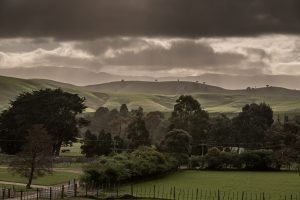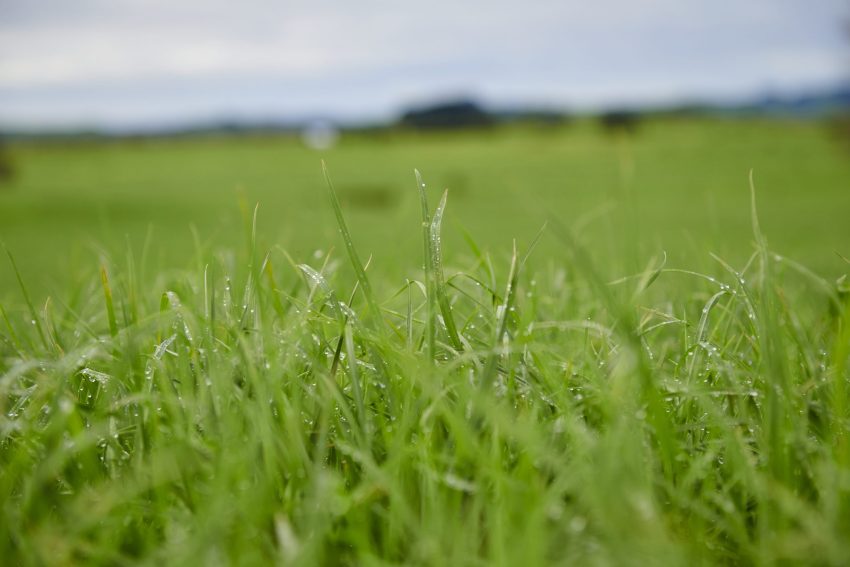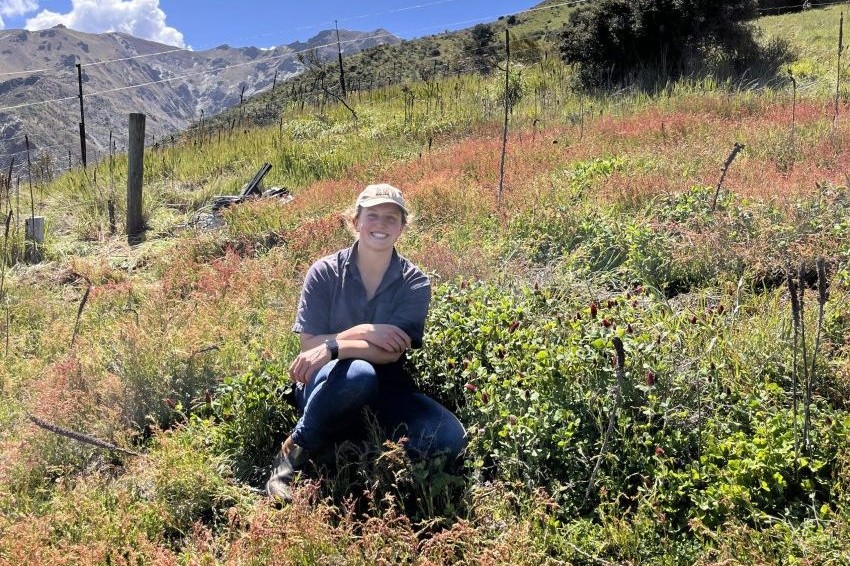Tararua’s Pukemiro Station is morphing from an education support operation to one with its own cadet training scheme. Rebecca Harper reports.
A large block of red and white clover is proving a winner for lamb finishing, as well as successfully lambing ewes on, at Pukemiro Station, near Dannevirke.
Owned by the ADB Williams Trust, the commercial breeding and finishing farm has a strong focus on educating the next generation of farmers, recently introducing a two-year cadet scheme.
Pukemiro manager, Jed Murphy, says the station probably runs a higher staff ratio than normal for a commercial farming operation and it’s important to find staff with the right skill set, considering the teaching component required.
Staggered lambing and calving dates help to spread the workload, as well as the climatic risk. “We are never hectic, but we are always busy,” he explains.
‘Our rotation has typically been old grass into rape, then into red and white clover. On some of the stonier country after three years we have under-sowed tall fescue into the red and white clover mix, ultimately for cattle finishing.’
Sheep performance is a big driver and they aim to finish everything.
“We want a robust sheep that can rear two lambs to weaning, every year, and those lambs grow on to be killed at either a light weight or a heavier weight.

“We’re seeing some really pleasing results in scanning and lambing percentages and also lamb growth rates. Last year we docked 156% (ewes to the ram).”
A month after weaning, ewe lambs are shorn and replacements are sent to Coonoor by the middle of January.
“The focus at Coonoor is growing the ewe lambs out. Everything is mated there as a hogget, with 40kg the minimum cut-off to go to the ram. We normally mate about 1700 hoggets there.”
They target lambs off mum and, with Pukemiro tending to be summer dry, Jed feels it is important to unload if possible. “The cheapest lamb you can produce is the one that goes on the truck at weaning, and with the staggered lambing dates it gives us a steady flow coming into the finishing platform.”
They also run Angus cross breeding cows at Coonoor, with the progeny sent back to Pukemiro to be finished. About 100 Hereford/Friesian breeding cows are run at Pukemiro.
“It’s kinder country here – it’s colder and wetter at Coonoor. The Hereford/Friesians are very good milkers and produce a cracking calf, bulls are killed before their second winter. We take them to 350kg carcaseweight.”
Cropping a strong component
With plenty of easier country you can get on with a tractor, a variety of crops grown at Pukemiro provide options.
Last spring they planted 8ha in Spitfire rape, 8ha in kale, 5.5ha in Fodder Beet and 2ha in oats. The oats have been planted strategically around the beet to provide transition feed for cattle.
The entire cropping policy is underpinned by 82ha of established red and white clover.
“Our rotation has typically been old grass into rape, then into red and white clover. On some of the stonier country after three years we have under-sowed tall fescue into the red and white clover mix, ultimately for cattle finishing.”
The oldest clover on the property will be four years old this spring and Jed is targeting five-to-six years from it. He says it takes three years to get payback on the investment, so six years should be very economic.
“The thing I like about it is it’s easy to maintain. From establishment, we feed rape to lambs over summer, then the cattle graze it over winter. In spring we cultivate it using discs and a deep ripper to aerate the soil and open it up to ensure the clover root can get down deep and find the water table. Then it’s power-harrowed a couple of times and roller drilled, with an aim to have it sown by Labour weekend.”
More? in Country-Wide, September 2018, on sale August 27.




